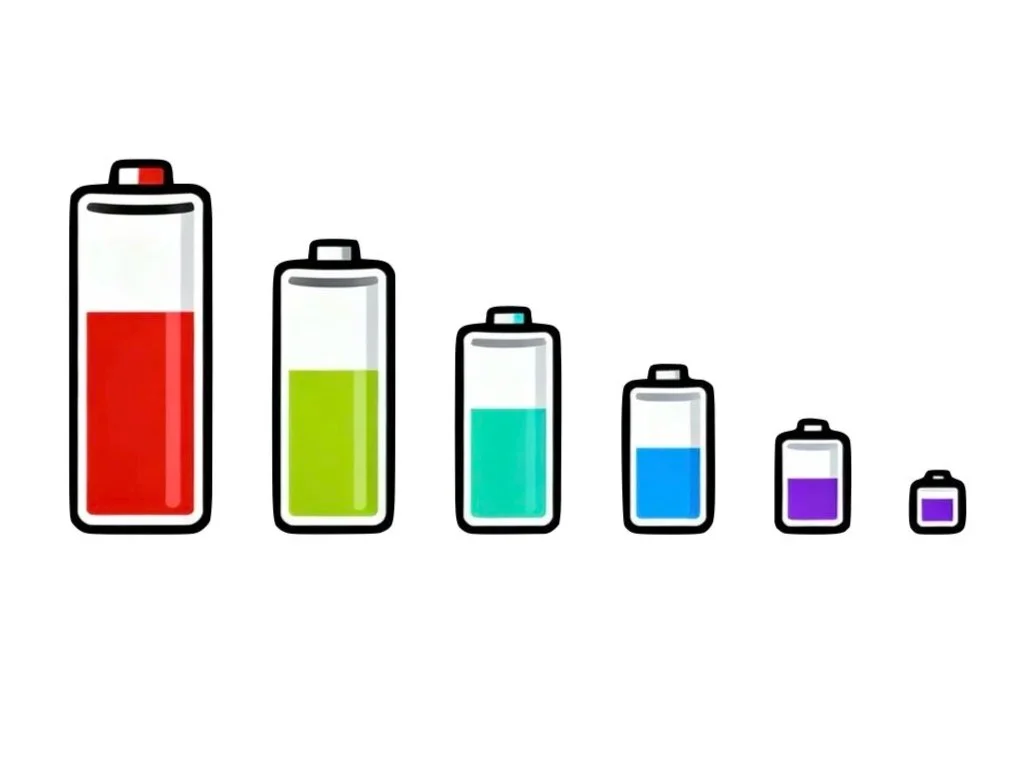IN THIS LESSON
Different Body Tissues Absorb Light Differently
Just like how a sponge soaks up water better than a rock, different parts of your body absorb light in different ways. For example:
Muscle tissue absorbs light differently than fat tissue
Skin color affects how much light gets through - darker skin blocks more light than lighter skin
Hair on your skin can also block some of the light
Click Image or THIS LINK for Published Studies
Wavelength Matters
Think of light like waves in the ocean. A wavelength is the distance between two wave peaks - like measuring from the top of one wave to the top of the next wave. Different colors of light have different wavelengths, just like ocean waves can be small ripples or big swells.
Light wavelengths are measured in nanometers (nm), which are incredibly tiny - about 25 million times smaller than an inch!
Different wavelengths of light carry different amounts of energy, just like different sized batteries. A 660nm red light has different energy than an 810nm near-infrared light.
The Light Rainbow and Your Body
When white light passes through a glass prism, it splits into a rainbow of colors. Each color has its own specific wavelength:
Green: 500-570 nm
Yellow: 570-590 nm
Red: 620-700 nm
Near-Infrared: 700-1000 nm (invisible to our eyes)
Your eyes can only see wavelengths between about 380-700 nm - this is called the "visible spectrum".
Why Different Wavelengths Work Differently
Here's the key: different wavelengths penetrate your body to different depths, just like how some flashlights shine farther than others.
Shallow Penetration
(Surface Level)
Green light (532 nm): Goes slightly deeper but stays near the surface
Medium Penetration
(Into the Skin)
Red light (630-660 nm): Penetrates about 2-5 mm deep into skin
Deep Penetration (Into Muscles and Tissues)
Near-infrared (850 nm): Reaches 5-10 mm deep
Deep infrared (1070+ nm): Can penetrate up to 10 mm or more
How This Affects Treatment
Green Light - The Nerves
What it does: Penetrates into skin layers to reduce neuro-inflammation and increases naturally produced opioids
Best for: Reducing pain and inflammation
Think of it like: A gentle surface cleanser that works on your body's top layers - it doesn't go deep like red light, but it's perfect for calming irritation, reducing dark spots, and telling your brain to make its own natural pain relievers
Red Light - The Skin Repairer
What it does: Penetrates into skin layers to boost collagen and healing
Best for: Reducing wrinkles, healing wounds, improving skin texture
Think of it like: A construction crew rebuilding your skin from the inside
Near-Infrared - The Deep Healer
What it does: Reaches deep into muscles, joints, and tissues
Best for: Muscle pain, joint problems, deep tissue healing
Think of it like: A deep tissue massage that reaches muscles and bones
Real-World Examples
Treating Acne: You need blue light (415 nm) because acne bacteria live on the skin surface. Red light won't work as well because it goes too deep and misses the bacteria.
Healing a Cut: Red light (660 nm) works perfectly because it penetrates just deep enough to reach skin cells that need to repair themselves.
Sore Muscles: You need near-infrared (850+ nm) because your muscles are deep under your skin. Blue or red light can't reach that far down.
Wrinkles: Red light (630-660 nm) is ideal because it reaches the skin layer where collagen is made, but doesn't waste energy going deeper.
Why You Can't Just Use Any Color
Using the wrong wavelength is like trying to:
Paint a house with a toothbrush (too small/shallow)
Thread a needle with a baseball bat (too big/deep)
Use a flashlight to light up the bottom of a swimming pool (not powerful enough)
Each wavelength has a "sweet spot" where it works best.
The Power of Combination Therapy
Many modern devices use multiple wavelengths together because they can treat different problems at the same time:
Red + Near-Infrared: Treats both skin and deeper tissues
Blue + Red: Kills bacteria AND promotes healing
Yellow + Red: Calms irritation AND builds collagen
The Bottom Line
Wavelength determines depth, and depth determines what gets treated.
Shorter wavelengths (blue, yellow) = surface treatments
Medium wavelengths (red) = skin treatments
Longer wavelengths (near-infrared) = deep tissue treatments
Just like you wouldn't use the same tool to fix a scratch on your car and rebuild the engine, different health problems need different wavelengths of light therapy to be effective.
Understanding wavelengths helps you choose the right treatment for your specific needs, whether that's clearing acne, reducing wrinkles, or healing sore muscles.

